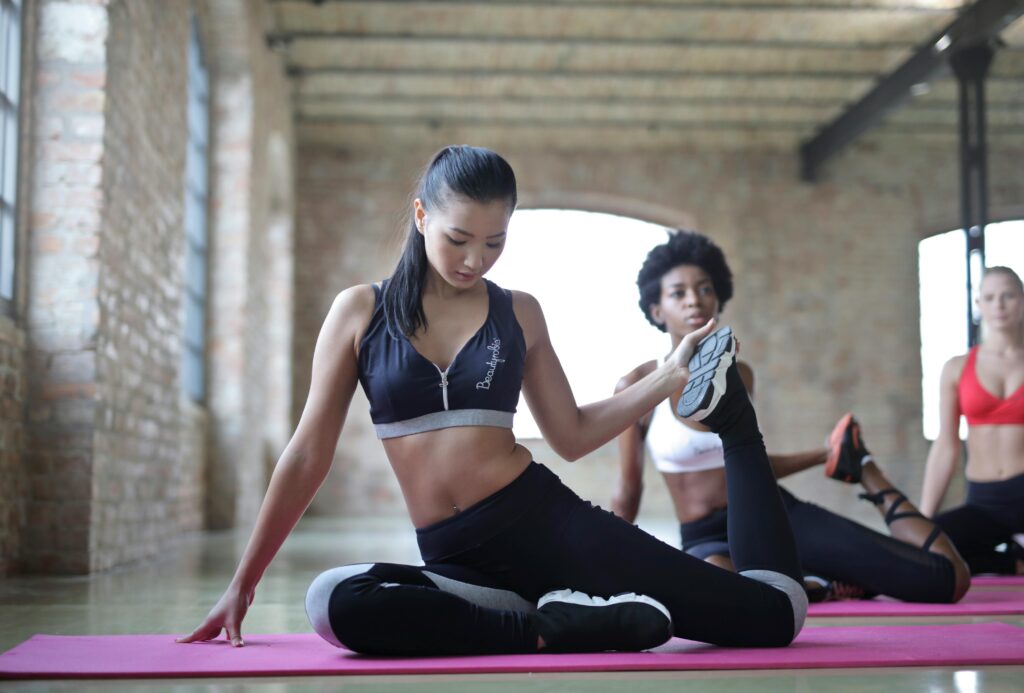Table of Contents
Introduction

When it comes to crafting a well-rounded fitness plan, flexibility stretching often doesn’t get the spotlight it deserves. Yet, flexibility is a cornerstone of physical health, influencing everything from injury prevention to overall performance.
This blog will delve into the vital role of flexibility stretching, the various types of stretching, and how to effectively incorporate it into your fitness routine. By understanding these elements, you can build a balanced fitness plan that enhances your overall health and wellness.
Flexibility is more than just a physical trait; it’s a crucial component of a comprehensive fitness regimen. Incorporating flexibility stretching into your routine can significantly improve your performance, prevent injuries, and enhance your overall quality of life.
In this blog, we will explore why flexibility is important, the different types of stretching, and how to seamlessly integrate stretching into your fitness plan.
1. Understanding Flexibility and Its Benefits
What is Flexibility?
Flexibility refers to the range of motion around a joint or series of joints. It is determined by the length and elasticity of muscles, tendons, and ligaments. Good flexibility allows for a greater range of movement, which is essential for performing daily activities and athletic endeavors without restriction.
Benefits of Improved Flexibility
- Enhanced Range of Motion: Increased flexibility allows your joints to move through their full range of motion, which can improve your performance in various physical activities and reduce stiffness.
- Reduced Risk of Injuries: Flexible muscles and tendons are less likely to be strained or torn during physical activity. Stretching regularly can help maintain muscle elasticity and joint mobility, lowering the risk of injuries.
- Improved Posture and Alignment: Stretching helps to correct muscular imbalances and align the body, which can lead to better posture and reduced back pain.
- Better Performance: Flexibility can enhance athletic performance by allowing for more efficient movement patterns and reducing the risk of injuries that might hinder performance.
- Increased Relaxation and Stress Relief: Stretching promotes relaxation by reducing muscle tension and encouraging mindfulness, which can help alleviate stress and improve mental well-being.
2. Types of Stretching

Understanding different types of stretching can help you choose the best methods to incorporate into your fitness routine.
a. Static Stretching
Description: Static stretching involves extending a muscle to its maximum length and holding it in that position for a period, usually between 15 to 60 seconds. This type of stretching is typically done after a workout or during cool-down periods.
Benefits:
- Increases overall flexibility.
- Helps with muscle recovery and reduces soreness.
- Enhances joint range of motion.
Examples:
- Hamstring Stretch: Sit on the floor with one leg extended and the other bent. Reach towards the extended leg and hold the stretch.
- Calf Stretch: Stand facing a wall, place one foot behind the other, and press the back heel down while leaning forward.
b. Dynamic Stretching
Description: Dynamic stretching involves moving parts of your body through their full range of motion in a controlled manner. It’s often used as part of a warm-up routine.
Benefits:
- Prepares muscles and joints for activity.
- Increases blood flow and body temperature.
- Improves performance by enhancing mobility.
Examples:
- Leg Swings: Stand on one leg and swing the other leg forward and backward in a controlled manner.
- Arm Circles: Extend your arms out to the sides and make small circles, gradually increasing the size.
c. Ballistic Stretching
Description: Ballistic stretching involves bouncing movements to push the muscles beyond their normal range of motion. This type of stretching is less common due to its higher risk of injury.
Benefits and Risks:
- Can increase flexibility if done correctly.
- Higher risk of muscle strain or injury due to the aggressive nature of the movements.
Examples:
- Bouncing Toe Touches: Bend forward and touch your toes with a bouncing motion.
d. PNF Stretching (Proprioceptive Neuromuscular Facilitation)
Description: PNF stretching involves both stretching and contracting the targeted muscle group. It often requires a partner to assist with the stretch.
Benefits:
- Highly effective for increasing flexibility and range of motion.
- Can lead to significant improvements in muscle length.
Examples:
- Contract-Relax Stretch: Stretch the muscle to its limit, then contract the muscle against resistance, and finally stretch it further.
3. Incorporating Stretching into Your Fitness Routine

Warm-Up and Cool-Down
Stretching should be integrated into both your warm-up and cool-down routines.
- Warm-Up: Dynamic stretching is ideal for warming up as it increases blood flow and prepares muscles for exercise.
- Cool-Down: Static stretching is beneficial after exercise to help muscles relax and reduce post-workout soreness.
Frequency and Duration
For optimal results, aim to include stretching in your routine at least 2-3 times per week. Each stretching session should last about 15-30 minutes, focusing on different muscle groups.
Balancing Stretching with Other Exercises
To create a balanced fitness plan, combine stretching with other forms of exercise, such as strength training and cardio. A well-rounded routine will help you achieve overall fitness and prevent imbalances.
4. Stretching for Different Fitness Goals
a. For Improved Athletic Performance
Dynamic stretching and PNF stretching are particularly effective for athletes. These methods enhance flexibility and prepare muscles for intense physical activity.
b. For Injury Prevention and Recovery
Static stretching and gentle PNF stretching can aid in injury prevention and recovery. These methods help maintain flexibility and ease muscle tension.
c. For General Health and Wellness
Incorporate a variety of stretching techniques into your routine to enhance overall flexibility, reduce stress, and improve well-being.
5. Tips for Effective Stretching

Proper Technique
Ensure you use correct form and technique to avoid injuries and maximize benefits. For static stretching, hold each stretch without bouncing or jerking. For dynamic stretching, perform controlled movements through the full range of motion.
Listening to Your Body
Avoid pushing yourself too hard. Stretch to the point of mild tension, not pain. If you experience discomfort, back off slightly.
Breathing and Relaxation
Focus on deep, steady breathing during stretches. This helps relax muscles and enhances the effectiveness of the stretch.
Make stretching a regular part of your fitness routine. Consistency is key to improving flexibility and reaping the full benefits.
6. Common Stretching Mistakes to Avoid
Overstretching
Pushing your muscles too far can lead to injury. Stretch gently and progressively increase the intensity over time.
Ignoring Warm-Up
Skipping a warm-up can lead to muscle strain. Always warm up with dynamic stretching before engaging in intense physical activity.
Rushing Through Stretches
Take your time with each stretch. Rushing can reduce the effectiveness of the stretch and increase the risk of injury.
Inconsistent Routine
Incorporate stretching regularly into your routine. Inconsistency can hinder your progress and prevent you from achieving your flexibility goals.
Conclusion
Flexibility stretching is a crucial element of a balanced fitness plan that often gets overlooked. By understanding the different types of stretching and their benefits, you can enhance your overall fitness, improve performance, and reduce the risk of injuries.
Incorporate stretching into your warm-up and cool-down routines, and make it a consistent part of your fitness regimen. With the right approach, you can enjoy a more flexible, healthier, and well-rounded fitness experience.


